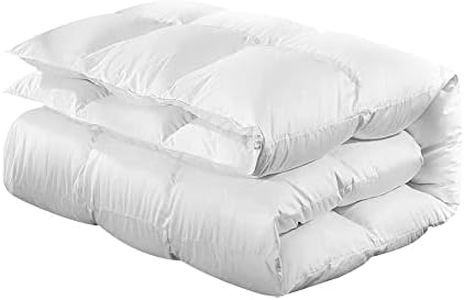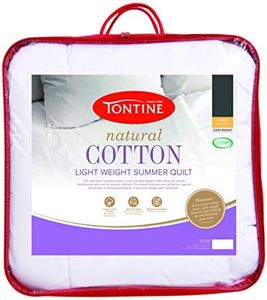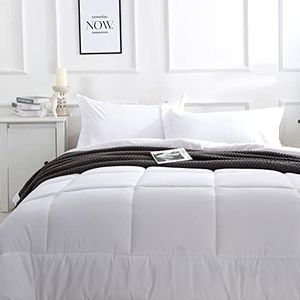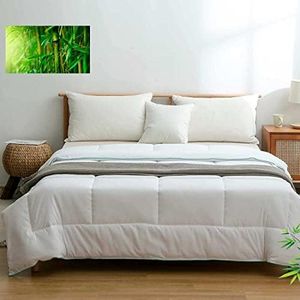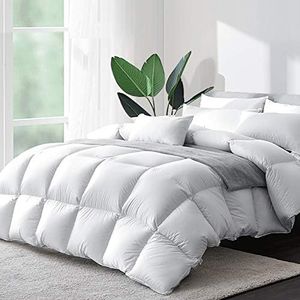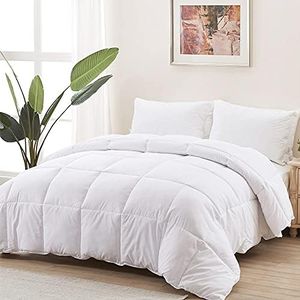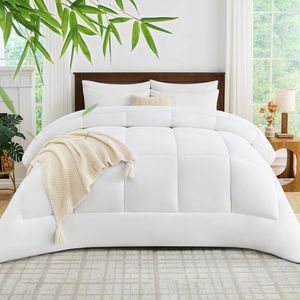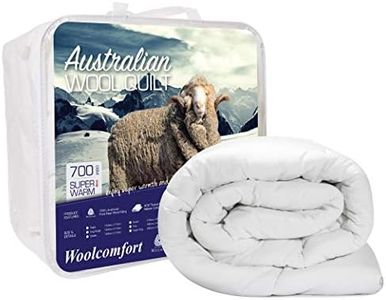We Use CookiesWe use cookies to enhance the security, performance,
functionality and for analytical and promotional activities. By continuing to browse this site you
are agreeing to our privacy policy
10 Best duvets
From leading brands and best sellers available on the web.Buying Guide for the Best duvets
Choosing the right duvet is all about matching your comfort needs, sleeping habits, and preferences for warmth and care. A good duvet will keep you cozy throughout the night, help regulate your temperature, and fit well with your sleeping environment. To make an informed choice, consider what kind of sleeper you are (warm or cool), whether you have allergies, how much you want to maintain your bedding, and what kind of feel you prefer (fluffy, lightweight, heavy, etc.).Filling MaterialThe filling material determines the feel, warmth, weight, and allergy-friendliness of a duvet. Common fill types include natural (like down or feather) and synthetic (like microfiber or polyester). Natural fillings are fluffy, breathable, and insulate well, but may not be suitable for allergy sufferers and often require special care. Synthetic fills are hypoallergenic, usually easier to wash, and can be more affordable, but might not feel as luxurious or last as long as high-quality natural fills. People with allergies, or those wanting easy care, should lean towards synthetic fills or specifically treated natural options. If you want the ultimate softness and warmth with breathability, and don't have allergies, natural down is ideal.
Tog RatingThe tog rating measures how well a duvet insulates and thus how warm it feels. Lower tog values (typically 1-4.5) are best for hot weather or warm sleepers, as they are lighter and cooler. Medium tog ratings (7-10.5) are versatile for spring and autumn, or if your home is neither too warm nor cold. High tog ratings (12-15) are best for winter or people who feel cold easily. Think about the temperature of your bedroom and whether you tend to overheat or feel chilly at night; this will help you select the right tog.
SizeThe size of the duvet should match or slightly exceed the size of your mattress so that it covers you well and looks good on your bed. Common sizes are single, double, queen, and king, but it's important to check the measurements as names can vary between regions. If you toss and turn, or share your bed and want extra coverage, consider going up a size for more comfort.
Cover MaterialThe outer fabric, also called the casing, affects how a duvet feels against the skin and breathes. Cotton is the most common, feeling soft and natural while allowing airflow. Some duvets use blends or microfiber for a smoother, often more affordable finish. Higher thread counts typically mean that the cover will be softer and sturdier. If you value a natural feel, breathability, or have skin sensitivities, look for 100% cotton with a high thread count.
Care and MaintenanceNot all duvets are easy to clean. Some can be machine washed, others need spot cleaning or professional care, especially heavier or down-filled duvets. Look at the care label to see what's required. If simplicity and regular laundering are important to you—for example, if you have allergies or pets—opt for a machine-washable, synthetic-filled duvet. If you're less likely to wash it often, you can choose a luxury or delicate duvet to care for gently.
Weight and LoftThe feel of a duvet depends partly on its weight (how heavy it feels) and its loft (how puffy it appears). Some people like a lightweight, barely-there duvet, while others find the feeling of a slightly heavier, cloud-like quilt comforting. Loft is often greater in down duvets, giving a plush appearance, while synthetics may be flatter. Consider whether you rest better beneath a light covering or want a structured, enveloping duvet.
